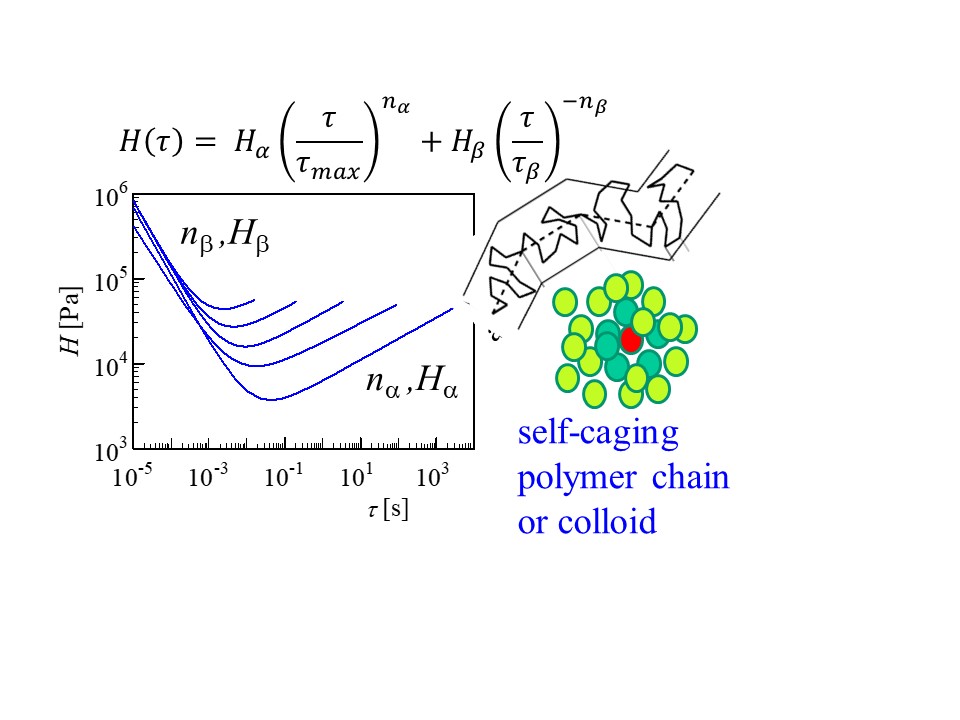The deformation and flow of polymeric and/or colloidal liquids is known to depend on the structure and connectivity of their small-scale constituents. Interestingly, very distinct behavior arises when these constituents are all about the same size and can be envisioned as trapping each other in cage-like structures. Such monodisperse liquids could be of long, linear, flexible macromolecules all of about the same length, or uniform colloidal particles closely together at an interface or packed in 3 dimensions, or oligomeric molecules near their glass transition at low temperature. Even though these building blocks differ fundamentally from each other, all of these cage-forming liquids (CFL) exhibit the same basic dynamics, suggesting that caging and getting caged are the overarching phenomena. This common property shows when linear viscoelastic experiments of CFLs get expressed in a relaxation time spectrum,
H. For all of these, the common spectrum was found to be of the BSW form (Rheologica Acta 29:400-408, 1990), wherein a fast relaxation process, expressed as power law of exponent
nb ≈ -3/4, interacts with a slow relaxation process, expressed as power law of exponent
na ≈ +1/4, and ultimately getting terminated by the liquid's longest relaxation time,
tmax. The positive slope of the slow relaxation mode is particularly noteworthy and appears to be a key characteristic of CFLs. CFLs are ideal in their composition and dynamics, far from practical needs, but the understanding of caging dynamics might provide guidance for the optimization and design of liquids with tailored properties. The rheological expression of caging will be demonstrated with small-amplitude oscillatory shear data from a range of CFLs, but also including deviations from the BSW format that might be caused by additional connectivity mechanisms. Collaborations: Elton L. Correia, Sepideh Razavi (2-colloid); Miriam Siebenbürger, Matthias Ballauff, Matthias Fuchs (3D colloid); Michael Baumgärtel, Marian Mours, Alois Schausberger (polymer). Modeling software: IRIS-RheoHub.


